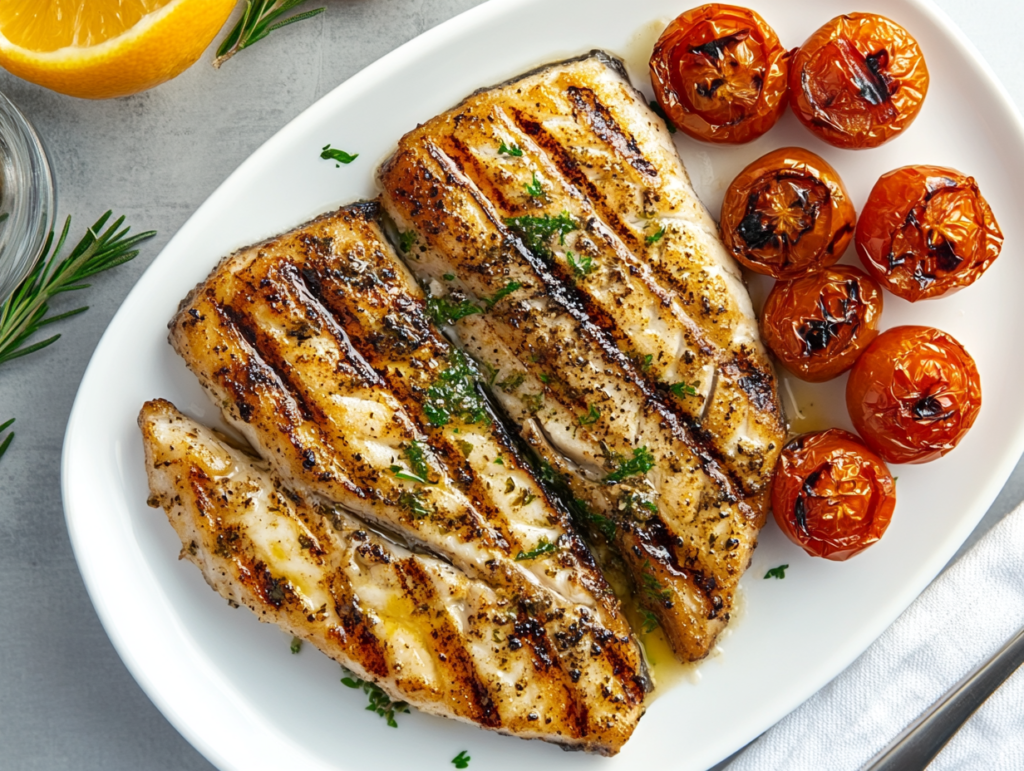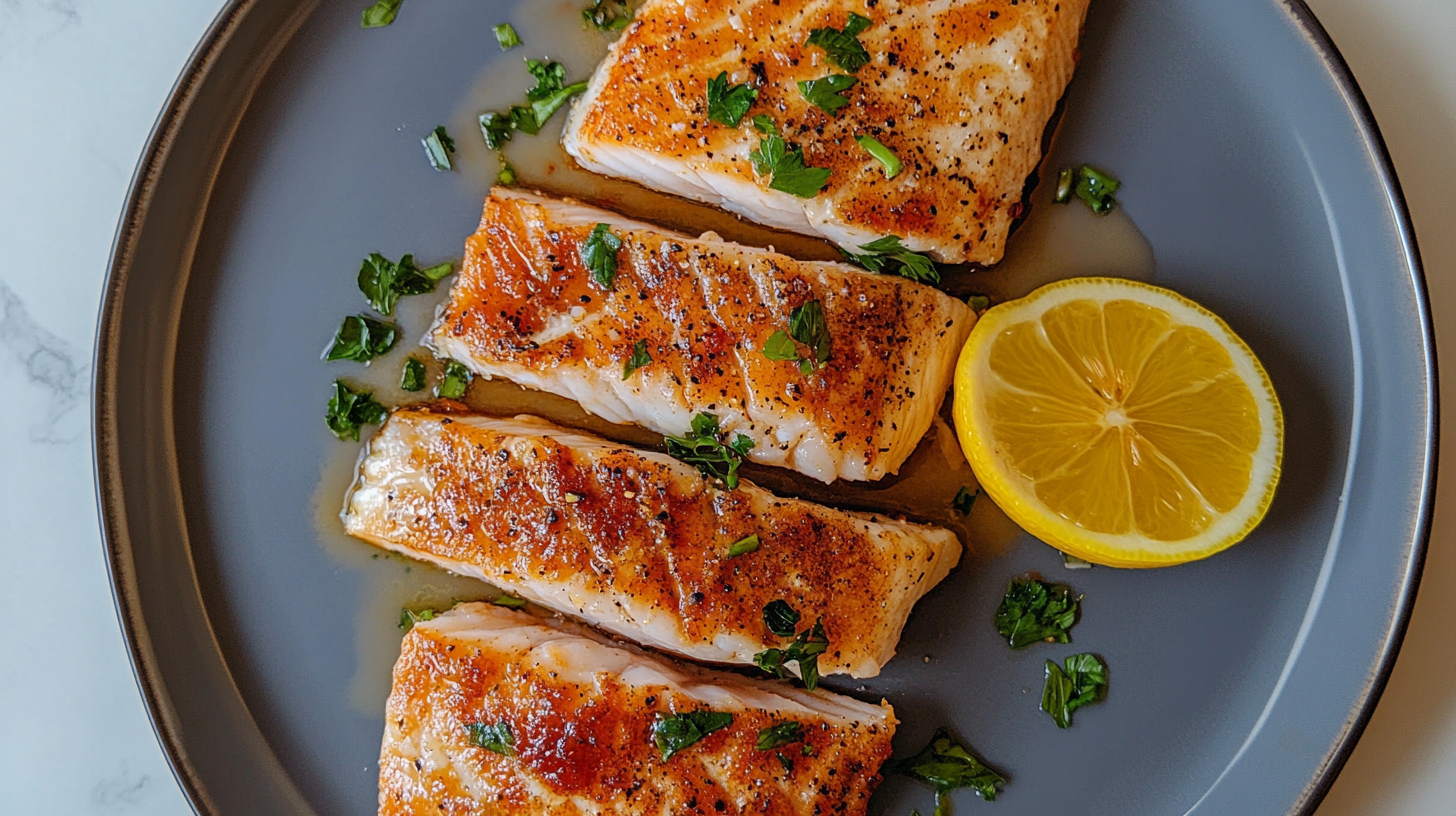Rockfish is a popular choice for many home cooks and seafood enthusiasts in the U.S. It offers a mild, delicate flavor and a firm, flaky texture that adapts perfectly to an array of cooking techniques. This article will thoroughly explore what is the best way to use rockfish? and will provide you with all the essential details, from understanding its distinct qualities to choosing the right cooking methods, flavor pairings, seasonings, and serving suggestions. Whether you are a seasoned seafood lover or new to cooking fish at home, you will find valuable insights, practical tips, and flavorful recipes to help you incorporate rockfish into your culinary repertoire.
Understanding Rockfish and Its Versatility
Rockfish, also known as Pacific rockfish or rock cod, refers to a large family of fish found along the West Coast of the United States. Basically, it is prized for its tender, lean flesh and subtle taste. Because of its mild flavor and flaky texture, rockfish appeals to both beginners and experienced cooks. Furthermore, its neutral profile makes it a versatile ingredient suitable for a variety of cooking methods. Indeed, you can grill, bake, pan-sear, fry, steam, or poach it without losing its delicate qualities.
Equally important, rockfish is a nutrient-dense choice for health-conscious eaters. It provides lean protein, essential vitamins, and minerals. Moreover, it is a source of heart-healthy omega-3 fatty acids. Consequently, incorporating rockfish into your meal plan offers health benefits alongside culinary enjoyment. Comparatively, rockfish shares some similarities with other mild white fish like cod, halibut, or snapper, making it easy to substitute in many familiar recipes.
Undoubtedly, when asking what is the best way to use rockfish? the answer varies depending on personal preferences and intended dishes. However, since rockfish adapts so well to numerous preparations, you have many options. Basically, its versatility extends from simple weeknight dinners to elegant weekend gatherings. Indeed, this fish can shine in everything from light salads to hearty stews.
Selecting and Storing Rockfish
Before exploring what is the best way to use rockfish?, it is essential to understand how to select and store it. Because freshness is key, always look for bright, clear eyes and firm, moist flesh without any off-odors. If buying fillets, check that the flesh appears translucent and not dry. Additionally, the scent should be clean and not overly fishy. Comparatively, fresher fillets yield better flavor and texture, thus making a difference in your final dish.
When you bring your rockfish home, store it properly. Undoubtedly, proper storage extends shelf life. Wrap the fish tightly in butcher paper or place it in an airtight container, then store it in the coldest part of your refrigerator. Ideally, use fresh fish within one to two days. Alternatively, you may freeze it for longer storage. However, ensure that you wrap it well to prevent freezer burn. Thaw frozen rockfish overnight in the refrigerator for the best results. Indeed, proper handling maintains quality and flavor, ensuring your chosen cooking method brings out the best in this fish.
Preparing Rockfish for Cooking
To truly determine what is the best way to use rockfish? you need to consider the preparation steps. Initially, pat the fillets dry with a paper towel. This helps the seasonings adhere. It also ensures you achieve a good sear if you decide to pan-fry or grill.
Next, remove any tiny pin bones that may remain in the fillet. Run your fingertips along the flesh to feel for small bones, then remove them with kitchen tweezers. Moreover, trimming away any excess skin or darker flesh can lead to a more appealing presentation. Because a neat, bone-free piece of fish cooks evenly and looks more inviting, do not skip this step.

You may also consider marinating or seasoning the fish before cooking. Another simple approach is to season lightly with salt, pepper, and maybe a squeeze of citrus. However, if you prefer bolder flavors, marinate it with fresh herbs, garlic, chili flakes, or ginger. Indeed, rockfish is a blank canvas that pairs well with bright, zesty flavors.
Exploring Key Cooking Methods for Rockfish
To answer what is the best way to use rockfish? in depth, let’s explore several cooking methods. Each technique offers unique textures, flavors, and culinary experiences.
1. Pan-Searing Rockfish
Pan-searing creates a crisp, golden crust and keeps the interior moist and flaky. It is one of the easiest methods and an excellent option if you are short on time. Initially, heat a tablespoon of oil or butter in a nonstick skillet over medium-high heat. Season your rockfish fillets simply with salt and pepper. When the pan is hot, place the fillets skin-side down if they have skin, or presentation-side down if skinless. Press gently to ensure good contact with the pan.
Cook for about three to four minutes without moving the fillets to develop a crust. Then flip and cook for another two to three minutes, depending on thickness. Because timing matters, watch the fillets carefully. Serve them immediately with a lemon wedge. This method highlights the delicate flavor of rockfish while adding a satisfying texture.
2. Baking Rockfish
Baking is another superb method, particularly if you want a simple, hands-off approach. Indeed, oven-baking allows flavors to meld as the fish gently cooks. Preheat your oven to 400°F (204°C). Lightly oil a baking dish and season your rockfish fillets with salt, pepper, and maybe fresh herbs like thyme or dill. Place them in the dish, add a drizzle of olive oil or a pat of butter on top, and bake for about 10 to 15 minutes depending on thickness. Generally, fish flakes easily with a fork when done.
Additionally, consider adding vegetables like cherry tomatoes, sliced zucchini, or asparagus spears to the dish. The vegetables cook alongside the fish, creating a complete meal. Another great addition is a splash of white wine or broth to keep the fish moist. Because baking allows seasonings to penetrate gently, it preserves the fish’s delicate qualities while infusing subtle flavors.
3. Grilling Rockfish
Grilling imparts smoky, slightly charred notes that complement rockfish’s mild flavor. Brush your fillets with oil, season with salt and pepper, and consider a sprinkle of smoked paprika or a citrusy marinade. Preheat the grill to medium-high. Place the fillets on the grate and cook for about three to four minutes per side, turning carefully.
Comparatively, grilling suits robust flavors. Try adding wood chips for extra smokiness. Because grilling requires attention, watch the fish closely to avoid overcooking. Serve your grilled rockfish with a bright salsa or a side of grilled vegetables. Especially in summer, this method brings a delightful outdoor element to your meal.
4. Steaming or Poaching Rockfish
For a lighter preparation, steaming or poaching preserves moisture and purity of flavor. Basically, these methods are gentle, ensuring the fish remains tender and succulent. To steam rockfish, place fillets in a steamer basket lined with parchment paper and season lightly. Steam for about five to eight minutes, depending on thickness.
Poaching involves gently simmering the fish in a flavorful liquid, such as a mixture of water, wine, lemon slices, and aromatics. Cook until the flesh turns opaque and flakes easily. Because these methods minimize added fats, they are particularly suitable for those seeking healthy cooking approaches. Moreover, the subtle flavors of rockfish remain the star of the dish.
5. Frying Rockfish
Occasionally, a crisp, golden fried fillet hits the spot. Frying rockfish yields a crunchy exterior that contrasts its tender flesh. Coat your fillets with seasoned flour, panko bread crumbs, or a light batter. Heat oil to about 350°F (177°C) and fry until golden on each side. Drain on a paper towel to remove excess oil.
However, frying is richer than other methods. Consider serving fried rockfish with a tangy dipping sauce or a fresh squeeze of lemon to brighten the flavors. Equally, coleslaw or a crisp salad provides a refreshing counterbalance. When enjoyed in moderation, frying can be another delightful way to enjoy rockfish.

Infusing Flavor: Marinades, Rubs, and Seasonings
When pondering what is the best way to use rockfish? remember that flavor enhancement is key. Because rockfish is mild, it can benefit from strategic seasoning. A simple blend of salt, pepper, and lemon zest highlights its inherent sweetness. However, if you crave bolder notes, experiment with fresh herbs like basil, cilantro, or parsley. Likewise, minced garlic, ginger, and shallots add depth.
Marinades work well if you have time to let flavors penetrate. For example, try a citrus-garlic marinade: whisk together lemon juice, orange zest, olive oil, chopped dill, and minced garlic. Let the rockfish soak for about 20 to 30 minutes. Another idea is a Mediterranean marinade with olive oil, rosemary, thyme, and a hint of paprika. Comparatively, a soy-ginger marinade gives an Asian-inspired flair.
Dry rubs are also excellent for grilling or pan-searing. For a spicy kick, rub the fillets with chili powder, smoked paprika, a hint of cumin, and a pinch of brown sugar. This creates a caramelized crust that balances sweetness and heat. Because rockfish has a neutral baseline, it welcomes diverse flavor profiles. Experimentation leads to discovering what is the best way to use rockfish? in your personal cooking style.
Pairing Rockfish with Accompaniments
Once you have mastered the cooking techniques, the next step is to consider pairings. Basically, think of sides, sauces, and complementary dishes that enhance rockfish’s profile. Because rockfish is mild, it teams wonderfully with fresh, bright flavors. Consider serving it with a citrusy salsa made from diced mango, red onion, cilantro, and lime juice. Alternatively, a light vinaigrette or a dollop of herbed yogurt sauce works beautifully.
Grain-based sides like quinoa, couscous, or brown rice provide a neutral canvas. Another smart option is roasted vegetables or a simple green salad. Consider seasonal produce: asparagus in spring, heirloom tomatoes in summer, or roasted root vegetables in cooler months. Undoubtedly, these pairings add color, texture, and complexity.
Additionally, do not overlook the power of simple garnishes. A sprinkle of fresh herbs, thinly sliced almonds, or a spoonful of capers can elevate your dish. Because rockfish is subtle, every thoughtful addition stands out. Thus, layering flavors and textures around the fish enhances the overall experience.
Special Techniques: What Is the Best Way to Use Rockfish? in Soups and Stews
Rockfish is not limited to fillet preparations. Consider incorporating it into soups, chowders, and stews. Because it holds its shape well when cooked, rockfish can enrich broths and sauces without falling apart. For example, a simple fish chowder with potatoes, corn, and cream provides comforting warmth in cooler weather. Add diced rockfish fillets near the end of cooking to avoid overcooking.
Another idea is a tomato-based stew with rockfish, shrimp, and clams. Aromatic ingredients like fennel, garlic, and saffron infuse the broth. Eventually, the fish soaks up these flavors, resulting in a rich, complex dish. Because rockfish responds well to gentle simmering, it is a natural fit for these comforting preparations.
Turning Rockfish into Tacos, Sandwiches, and Wraps
If you are seeking a fun, casual way to enjoy rockfish, consider tacos or sandwiches. Pan-sear or grill the fillets, then break them into chunks. Layer them inside warm tortillas with crunchy cabbage, fresh salsa, creamy avocado, and a zesty lime sauce. Basically, this transforms your rockfish into a handheld feast that is perfect for weeknights or gatherings.
Similarly, use rockfish as a sandwich filling. A soft roll or brioche bun, a smear of tangy aioli, crisp lettuce, and pickled onions create a delightful combination. Comparatively, if you prefer wraps, add shredded vegetables, hummus, and grilled rockfish fillets for a light, satisfying meal on the go. Because rockfish is so versatile, it suits many cuisines and meal formats.
Healthy Ways to Use Rockfish
For health-conscious eaters, rockfish aligns perfectly with a balanced diet. Indeed, it provides lean protein, important nutrients, and beneficial fatty acids. Additionally, choosing gentle cooking methods like steaming, poaching, or baking with minimal added fats keeps it light. Pair it with whole grains, leafy greens, and fresh fruits to create nutritious meals.
Basically, a simple baked rockfish fillet topped with a tomato-herb relish and served alongside quinoa and a green salad exemplifies a wholesome dinner. Another healthy approach is a vegetable-packed soup with chunks of tender rockfish. Because rockfish is low in calories and fat, it fits well into various dietary plans.
If you’re looking for more detailed, step-by-step instructions and meal ideas, consider checking out our Rockfish Recipes Made Simple.
Impressing Guests with Elegant Presentations
If you want to showcase what is the best way to use rockfish? at a dinner party, consider elegant presentations. Steamed rockfish with a bright herb sauce and roasted heirloom carrots makes a refined entrée. Plate the fillets neatly, garnish with microgreens, and drizzle a delicate sauce over the top. Another idea is a parchment-baked rockfish fillet en papillote, cooked with wine, shallots, and cherry tomatoes. When guests open the parchment at the table, aromatic steam escapes, revealing a perfectly cooked fish.
Because rockfish is mild, select garnishes that provide visual appeal and complementary flavors. Fresh herb sprigs, edible flowers, or a swirl of flavored oil can add a gourmet touch. Indeed, mastering a beautiful presentation shows that you understand what is the best way to use rockfish? in a fine-dining context.
Seasonal Considerations and Sustainability
Rockfish is available year-round, though some species and varieties may be more common in certain seasons. Nevertheless, it is wise to consider sustainability. Whenever possible, choose rockfish sourced from reputable fisheries that employ responsible fishing practices. Check for certifications or ask your fishmonger for guidance. Undoubtedly, supporting sustainable seafood helps preserve marine ecosystems and ensures that future generations can enjoy rockfish.
Because the flavor of rockfish is subtle, it pairs well with produce at its seasonal peak. For instance, in summer, fresh herbs, tomatoes, and zucchini complement grilled or baked rockfish beautifully. In winter, consider heartier sides like roasted root vegetables or a warm grain salad. Adjusting accompaniments according to the season keeps your meals interesting and highlights the freshness of all ingredients.
Common Mistakes to Avoid
While it is easy to enjoy rockfish, there are some pitfalls to avoid. First, do not overcook it. Because rockfish is lean and delicate, overcooking can lead to dryness. Pay attention to cooking times and check for doneness frequently. Another mistake is under-seasoning. While subtle seasoning works, a completely bland preparation fails to highlight the fish’s mild flavor. Even a simple pinch of salt and a squeeze of lemon can make a huge difference.
Also, do not shy away from experimenting. Basically, many home cooks stick to one or two methods and never explore rockfish’s full potential. Try new recipes, flavor combinations, and cooking styles. Eventually, you will find your favorite approaches and understand what is the best way to use rockfish? to suit your personal taste.
Frequently Asked Questions (FAQ)
Is rockfish a good eating fish?
Yes, rockfish is an excellent eating fish because it has a mild, flaky texture and a delicate flavor. It is easy to prepare and pairs well with many seasonings.
How do you eat rockfish?
You can eat rockfish in many ways. Grill, bake, pan-sear, or fry it. Serve it with simple sides, add it to tacos, or incorporate it into soups and stews. Its versatility makes it suitable for countless recipes.
Do you leave skin on rockfish?
You can leave the skin on or remove it before cooking. The skin can help keep the fish moist, especially when grilling or pan-searing. However, if you prefer skinless fillets, it is easy to remove it after cooking.
Should I soak rockfish in milk?
Soaking rockfish in milk is an optional step that can help neutralize any mild fishy odor. However, it is not always necessary. If the fish is fresh, a simple rinse and pat dry often suffice. If you prefer, a brief soak in milk before cooking can impart a milder flavor.
Conclusion: Discovering What Is the Best Way to Use Rockfish?
Ultimately, what is the best way to use rockfish? depends on your personal tastes and culinary goals. Some prefer the simplicity of pan-seared fillets with just a hint of salt and lemon, while others enjoy bold flavors from marinades, rubs, and spices. Moreover, rockfish’s adaptable nature allows it to shine in various contexts—casual weeknight dinners, elegant dinner parties, or healthy meal plans.
Because it is mild yet versatile, rockfish welcomes many cooking methods, seasonings, and side dishes. Try grilling for smoky depth, baking for a moist, tender texture, or steaming for a light, healthy approach. Experiment with fresh herbs, citrus juices, and global spice blends to discover your favorite combinations. Once you understand its qualities and have practiced a few techniques, you will know what is the best way to use rockfish? to achieve flavorful, memorable meals that delight the palate and nourish the body.

